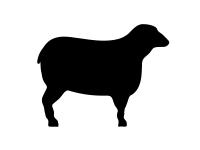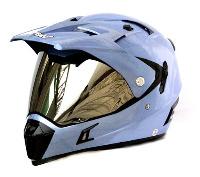Path Blending for rotary moves
- Badger
-
 Topic Author
Topic Author
- Offline
- Senior Member
-

Less
More
- Posts: 44
- Thank you received: 21
16 Feb 2017 14:46 #88052
by Badger
Path Blending for rotary moves was created by Badger
I think I have a fairly good understanding of G64 as it applies to to linear moves, but is there an equally easy way to blend rotary moves? I am working on a rugbot which uses the A axis similar to a tangent knife to keep the mechanism aligned with the direction of travel. I do my design in Inkscape and generate the gcode with gcodetools which generally works fantastic. The problem is that at many segments meet with a slight angel which causes the machine to stop and wait for the A axis to get in position, which is required for large angles but not for angles less than maybe 3 degrees. I can edit the drawing to smooth out the joins but that takes many times longer than letting the machine stop to turn. A setting in Linuxcnc that would allow a blending of rotary moves separate of linear moves would be swell.
Attached is a typical gcode for my project. Even though there is a separate "A" move between each segment it is ignored if it is the same as the previous segment, which is good. (in retrospect it could actually be doing something that is to brief to be observed) Some way of mass editing files to eliminate the separate "A" move if it is less than a certain amount could also work.
This isn't a critical problem but rather a little wacky puzzle for anyone.
Attached is a typical gcode for my project. Even though there is a separate "A" move between each segment it is ignored if it is the same as the previous segment, which is good. (in retrospect it could actually be doing something that is to brief to be observed) Some way of mass editing files to eliminate the separate "A" move if it is less than a certain amount could also work.
This isn't a critical problem but rather a little wacky puzzle for anyone.
Please Log in or Create an account to join the conversation.
- bkt
-

- Offline
- Platinum Member
-

Less
More
- Posts: 1110
- Thank you received: 113
03 Mar 2017 22:08 #88968
by bkt
Replied by bkt on topic Path Blending for rotary moves
you have a lot of g0 - g3 -g0 -g3 sequence ..... g64 not help you .... but if you increase a little the deadband in ini file may be make your makine more "soft" .... any how use g1 instead g0 ... maybe the acceleration are not well balanced for g0 movement...
regards
giorgio
regards
giorgio
The following user(s) said Thank You: Badger
Please Log in or Create an account to join the conversation.
- Badger
-
 Topic Author
Topic Author
- Offline
- Senior Member
-

Less
More
- Posts: 44
- Thank you received: 21
09 Mar 2017 21:02 #89291
by Badger
Replied by Badger on topic Path Blending for rotary moves
The wacky reason for the g0 moves is that it is only for the rotary A axis moves, which has fairly low inertia so it can move fast. It seems that LCNC equates linear units and rotary units the same so if I have my feed set to 960 mm/minute it limits my g01 rotary movements to 960 degrees/minute which is really slow. I imagine that if I was using inches it would be worse.
I have had some success with editing my designs to make as many transitions of segments symmetrical and that helps some. Always looking for an easier /lazier method.
Thanks for you help, Badger
I have had some success with editing my designs to make as many transitions of segments symmetrical and that helps some. Always looking for an easier /lazier method.
Thanks for you help, Badger
Please Log in or Create an account to join the conversation.
- bkt
-

- Offline
- Platinum Member
-

Less
More
- Posts: 1110
- Thank you received: 113
15 Mar 2017 15:06 #89671
by bkt
Replied by bkt on topic Path Blending for rotary moves
.... I think you must evaluate your ini and hal file and your kins .... In my experience not see these .... you can send these info?
And a piece of your gcode?
regards
Giorgio
And a piece of your gcode?
regards
Giorgio
Please Log in or Create an account to join the conversation.
- Badger
-
 Topic Author
Topic Author
- Offline
- Senior Member
-

Less
More
- Posts: 44
- Thank you received: 21
19 Mar 2017 14:51 #89887
by Badger
Replied by Badger on topic Path Blending for rotary moves
Giorgio-
Thanks for your offer to review my files. My machine is in another state of modifications so it may be a while before I can get practical information. I will send as much info as possible.
I did read another post recently about someone else's issues with a rotary table and it was quite clearly explained why rotary axis move at different rates for coordinated moves versus their rate for independent moves so that did clarify some of my issues.
Thanks for your offer to review my files. My machine is in another state of modifications so it may be a while before I can get practical information. I will send as much info as possible.
I did read another post recently about someone else's issues with a rotary table and it was quite clearly explained why rotary axis move at different rates for coordinated moves versus their rate for independent moves so that did clarify some of my issues.
Please Log in or Create an account to join the conversation.
- zhivko
- Offline
- New Member
-

Less
More
- Posts: 15
- Thank you received: 1
15 Jun 2017 06:04 #94520
by zhivko
Replied by zhivko on topic Path Blending for rotary moves
For using combined moves, you could try using inverse time mode.
Read about it in docs.
Problem is that blending as I know is only 1 step lookahead.
Read about it in docs.
Problem is that blending as I know is only 1 step lookahead.
Please Log in or Create an account to join the conversation.
Time to create page: 0.084 seconds
